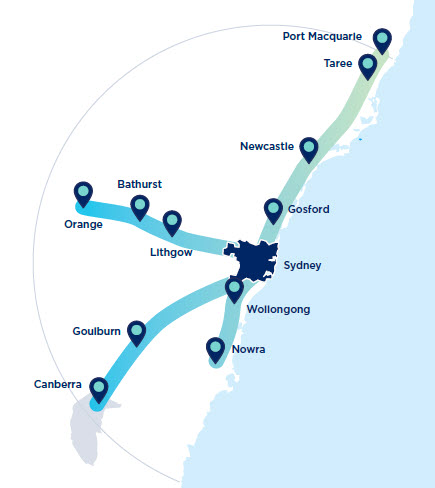While I was overseas a few months ago in Tbilisi (among other things looking at the city’s transport systems) I read The Conversation article by Todd Denham and Jago Dodson – Regional cities beware – fast rail might lead to disadvantaged dormitories, not booming economies critiquing the Federal Government funding of nine business cases assessing fast rail opportunities in NSW, Queensland and Victoria. At the time I wrote a response on social media but thought I would turn this into a longer article.

VLine VLocity Train, currently the backbone of the Victorian regional rail network. Source: Public Transport Victoria
Denham and Dodson’s article concentrated on the plans to develop a fast rail connection between Melbourne and Geelong. The crux of their argument is that fast rail strategies treat “regional towns as remote dormitories for metropolitan workers rather than as regional cities that serve as service hubs and employment centres”. Furthermore, they claim that:
Reduced travel times can mean regional businesses become less efficient than metropolitan competitors that can offer a wider range of specialist goods and services. This may lead to regional business closures, employment losses and wage decline. Unless a regional city is able to develop a specialised set of high-skill, high-wage industries that complement or outcompete the metropolis it risks being economically disadvantaged by faster rail.
Dodson amplified some of these arguments recently in another article specifically addressing the population impacts of high speed rail. I have a lot of time for Jago Dodson’s work and I would like to see the full research work behind the claims in both articles, but the problem I have with this sort of analysis is that it often treats fast rail in isolation, ignoring parallel investment in other transport infrastructure. Continue reading











